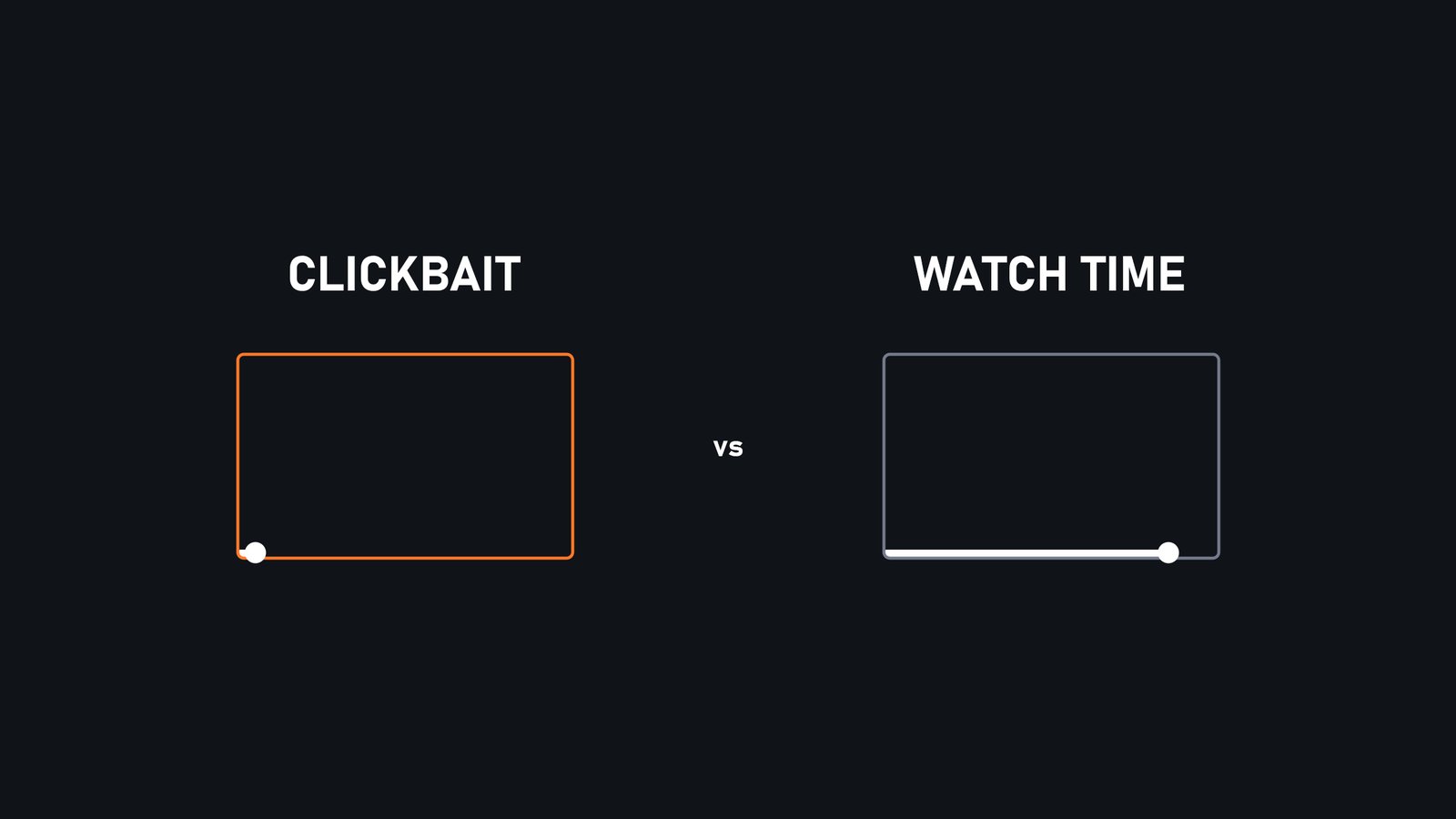

Watch Time vs Clickbait
I spent the last 13 years of my life on YouTube.
For those who quickly get lost in technicalities, here is an easy-to-understand framework that I learned on the battlefield and use to understand what the algorithm wants (and especially doesn't want):
To understand the algorithm, you first need to analyze its evolution and the problems YouTube had to overcome along the way to get to the version we have today.
Good news: I witnessed that evolution, and I'm here to report it for you. Let's do a bit of history:


2007-2012: In its early days, the YouTube algorithm was heavily focused on view counts, meaning the more a video had views, the more likely it would be recommended.
If you're an old fuck like me, you remember that making content on the internet was far from being like it is today (very few softwares, sluggish internet connection etc). The market was completely different back then (less competition, fewer viewers and as a result, a very low supply of video compared to what it is today.)
It took a few years before the market started to figure out clickbait, but once it did (around 2011), it quickly became out of control.
2012-2015: To combat clickbait, YouTube made a significant shift. They updated the algorithm and made it prioritize watch-time this time instead of view count to solve this problem.
And indeed, it solved it.
What they hadn’t predicted though, is that after a while, another unwanted trend started to emerge: a flood of low-quality long-form content (mostly gaming gameplays).
2016-Today: In 2016, to fix the "clickbait/watchtime" imbalance, YouTube began introducing sophisticated machine learning focused on viewing patterns (personalized recommendations based on individual user preferences), which finally made the algorithm way more balanced.
To keep it simple:
Catching attention without retaining it = flagged as clickbait
Retaining attention but only catching a little = flagged as too niche
In both cases, videos stop being recommended early.


That's why, around that era, the "hook meta" (creators teasing the content of the video at the start) emerged on a large scale, allowing creators to retain more viewers.
Here's what we can learn from this chronology:
Catching attention is now the key again BUT with a condition: the content has to deliver the packaging's promise if you want to farm watch time and keep your video getting recommended.
Next time you upload a video and make your thumbnail & title, remember that there's a threshold level of "catching attention" at which your video goes from interesting to clickbait and potentially ruins its reach.


While the viewers can tolerate a bit of sneakiness and quickly forget if the content delivers, if it's not the case, they'll feel manipulated and instantly punish you.
That's why keeping that balance is crucial.
Home